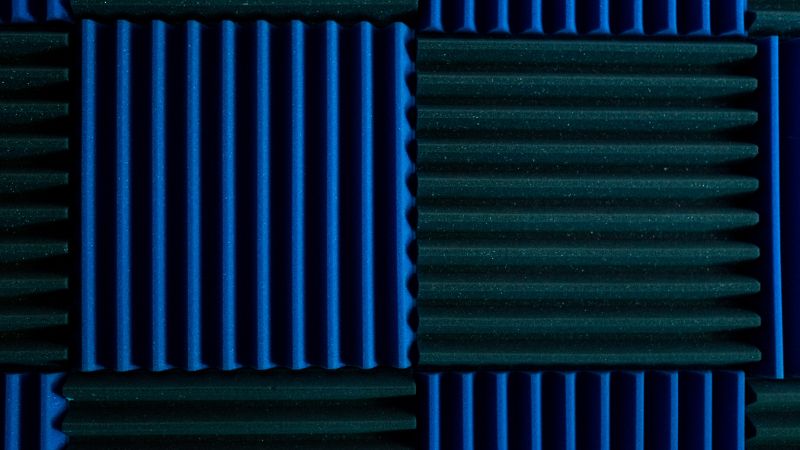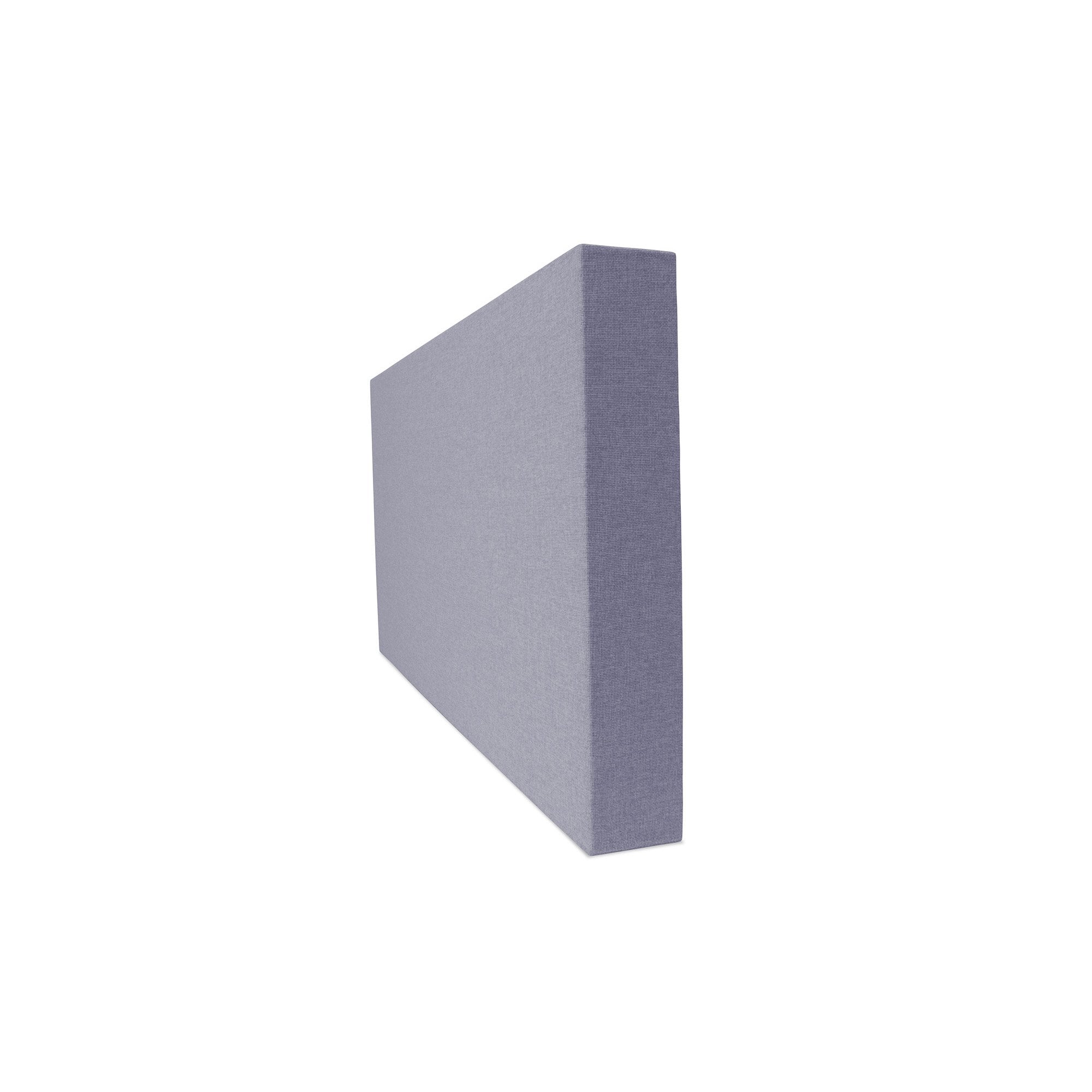Ever noticed how some rooms just sound better? That's the magic of acoustic panels at work. Whether you're recording a song in a studio, attending a meeting in an office, or simply relaxing in your living room, the sound quality matters immensely.
These panels, often crafted from materials like foam, fibreglass, rock fibre, and PET, have a significant say in how your space sounds. High-quality ones can elevate your auditory experience, but if you're considering cutting corners, you might want to think twice.
Before we jump in, remember: while acoustic panels deal with sound within a space, they don't block sound from coming or going—that's a job for soundproofing.
Sound Absorption
The effectiveness of an acoustic panel is its ability to absorb sound. This is essentially about how well it can prevent those annoying echoes and reverb that can make conversations or music sound like they're taking place in a cavern. Different materials have their strengths—foam, fibreglass, rock fibre, and PET all bring something to the table.
Even if you've chosen a proven material, if the quality isn't up to par, it might not deliver as you'd hope. The real culprits are those tricky low frequencies. You know, the ones responsible for that deep bass? They're a bit demanding and prefer thick, dense materials. So, if your panels are under 5cm thick, or if they're just not up to the task, you might find your space sounding less like a calming refuge and more like an echo chamber.
Lifespan
When you invest in something, you'd hope it sticks around for a while, right? The same goes for acoustic panels. But here's the thing: not all materials age gracefully. Foam, for instance, can start to discolour, turning a not-so-lovely shade of yellow before it begins to crumble like an old biscuit!
Then there are materials like rock fibre or fibreglass, which might start sagging if the binders holding them break down. And if these fibres decide to take a trip into the air? Well, let's just say they're not the best for respiratory health. In short, going cheap might have you revisiting your purchase decision sooner than you'd like, both for your room's sound quality and your health.
PET is the most durable material used for acoustic panels, but always check reviews to be sure you’re investing your money wisely.
Aesthetics
While sound is the main game, you can't ignore the visuals. Acoustic panels can be quite the style statement, complementing the decor of your room. But if you opt for lower quality, you might be compromising on aesthetics. Foam panels, despite being budget-friendly and relatively easy to install, often come in a limited colour palette.
If you're after a particular shade or pattern to match your room's vibe, fabric-covered panels might be your go-to. But a heads-up: even these can show signs of wear and tear, like sagging or fading, if they're not of the best quality.
The best-looking panels tend to be made from PET fibre and combine attractive shapes and patterns with fabrics to suit a range of tastes and decors.
Frequency Range
Every space has its unique sound signature, based on its size, shape, and purpose. And while absorbing sound is vital, what's more crucial is absorbing the right frequencies. Spaces dedicated to sound-related work, like recording studios, need a precise balance. But here's the kicker: low-quality panels might not be cut out for the job.
They might do a decent job with mid to high frequencies but might not be thick enough for the more demanding low frequencies. And if you're serious about sound, you'd know that this imbalance can significantly impact the clarity and quality of sound reproduction.
Potential Health Hazards
Sound quality is essential, but not at the expense of health. Some low-quality panels might use materials or production processes that can affect indoor air quality. There's a risk of off-gassing of volatile organic compounds (VOCs), which can lead to a host of health issues with prolonged exposure. Then there's the potential hazard of panels breaking down, releasing particles which aren't the best to breathe in. And of course, there's fire safety to consider.
Different settings have varied requirements, and it's crucial to ensure that any panel meets the necessary fire safety standards. PET fibre panels from a reputable supplier should ace all these requirements, keeping your home or work space quiet without compromising on safety.
FAQs
- How can I identify a low-quality acoustic panel?
Research the materials and their quality. Foam, fibreglass, rock fibre, and PET are standard, but their quality can differ. You often get what you pay for, and products made in the UK and Europe may be higher quality than imports being sold on online marketplaces. Imported foam which is supplied in a compressed form is likely to be packaging or furniture foam being sold as acoustic. Reviews and technical specifications can offer additional insights.
- Are all budget panels inherently low quality?
Not necessarily. While there's often a correlation between price and quality, it's crucial to assess materials and craftsmanship. A reputable brand's product, especially when the design seems innovative, might be a safer bet.
- How often should I replace acoustic panels?
Depending on the material and its quality, some panels might need replacement sooner than others. Foam, for instance, might degrade faster than rock fibre or fibreglass. PET from a reputable supplier is likely to be the most durable choice.
- Can I test an acoustic panel's sound absorption quality?
Holding different materials in front of your face and speaking can give you a feel for how effective it is at speech frequencies. You can also do before and after tests with test software such as Room EQ Wizard and a suitable microphone.
The only way to really know in advance is to look at absorption test data from an independent acoustic lab, which the manufacturer should be able to provide. Single figure ratings such as NRC provide less information than absorption coefficients or Sabines for different frequency bands.
- How do VOCs impact health?
VOCs can degrade indoor air quality. Over time, high VOC levels can lead to respiratory issues, allergies, and other health problems. PET is the best material choice if this is a concern.
- What's the ideal frequency range for an acoustic panel?
It depends on the room's function. For example, studios benefit from panels efficient across a broad frequency range, particularly the lower frequencies. Complimenting acoustic panels with bass traps is also recommended when audio quality is a requirement.
In general, the broader the frequency range of the material, the better. Don’t forget that thickness is directly related to frequency range, so thicker panels (5cm+) are always a better choice.












